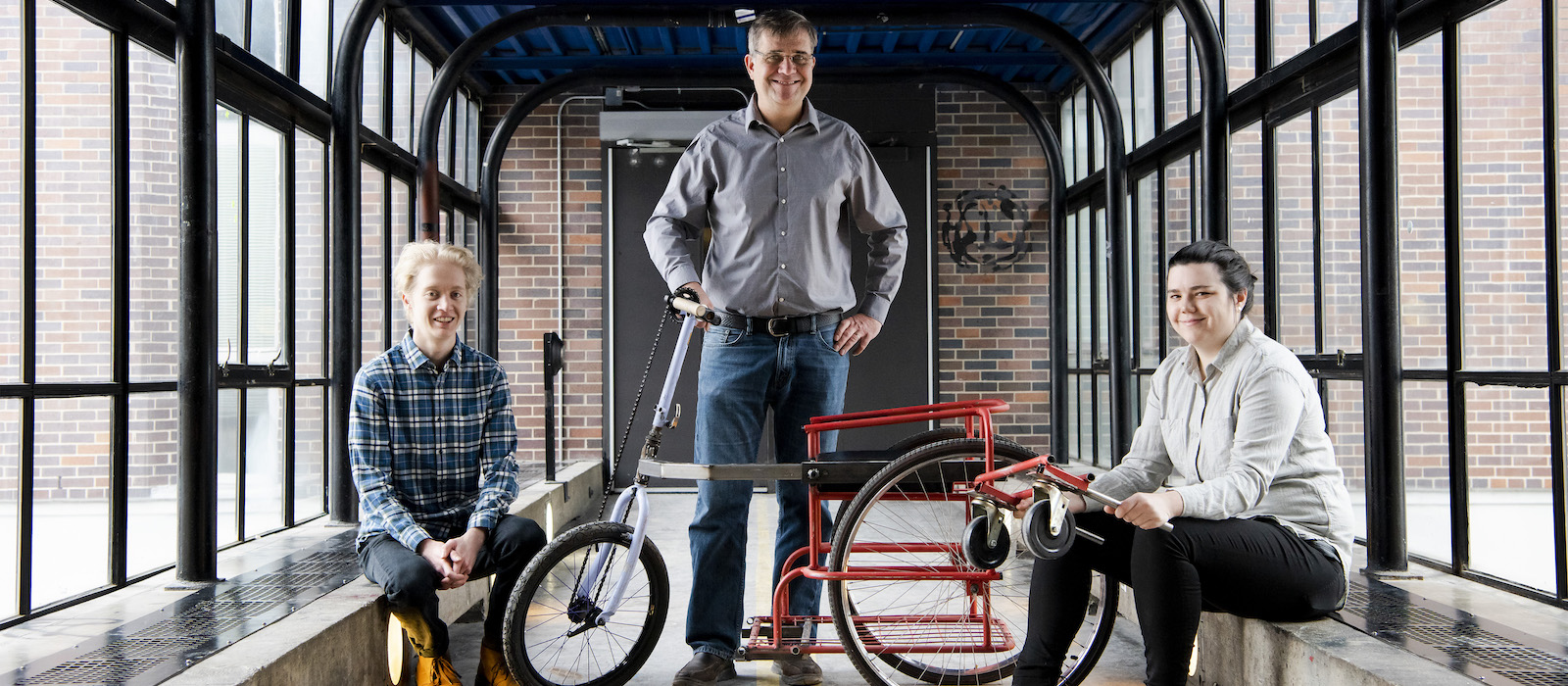Researchers and students at Carleton’s School of Industrial Design, along with Carleton’s Research Education Accessibility and Design initiative (READ), and the CanUgan Disability Support program, came together with funding from the Promobilia Foundation to continue the development of a transitional two-in-one wheelchair prototype that was initially created at Carleton in 2012 through a grant from Canada’s International Development Research Centre (IDRC).
The researchers and students at Carleton and the CanUgan team wanted to find a better way to provide people with disabilities living in extreme poverty with mobility devices. Importing the devices from other countries, a common practice among NGOs who supply mobility devices, was an expensive endeavour. Additionally, devices that were manufactured outside of the rural regions they were being delivered to tended to have a short life; the wheelchairs and other mobility devices would break easily on the rough terrain, and with no parts or manufacturer in the country, the devices would become unusable to those who needed them. A more cost-efficient and long-term strategy was needed, and so the Promobilia project was created.
People with disabilities, especially school age children, needed a way to travel across uneven rural terrain to get either to and from school or to and from a market, for instance. Tricycle wheelchairs, where the device is mobilized with the user’s arms acting as pedals to rotate the train, were the best option for traversing this terrain. However, these devices were too large and cumbersome to be of any use to the individuals once they arrived at their destination and needed a mobility device that could function indoors. That’s where the transformation into the wheelchair is the most helpful.
Products such as this—a tricycle that can transform into a wheelchair, and vice versa—already exist in the market. The challenge with these other products was that they were incredibly expensive not only to purchase, but also to ship. And, once they arrived at their remote destinations, performing any maintenance on the chairs was difficult, if not impossible, because local artisans do not have access to the infrastructure or parts necessary to make repairs. For this reason, the Promobilia project focused on creating a product design that could be locally manufactured in rural areas of Uganda, where poverty is at its worst, and those living with disabilities have few to none options for income generation.
By working in partnership with local manufacturers, and testing multiple design prototypes with end-users, the Promobilia project has developed a product that can be produced in rural locales of Africa by artisans, using the tools they already have access to. This eliminates the cost of shipping for the provider of mobility aids (such as CanUgan, in this instance), and, provides business for the local economy. The devices are initially designed with the rough rural terrain in mind, but in the instance that they do require repairs, they can be done in their region by the same people who built them in the first place.
Overall, the Promobilia project is about empowering people with disabilities living in extreme poverty. With access to a more stable and adaptable mobility aid, people living with disabilities can attend school, take their crafts and wares to markets, and conduct other business they would not normally be able to do without access to a mobility aid. If people with disabilities living in rural Uganda can begin to provide income for their households, the stigma of disability as a burden in the region may slowly begin to decline.
The ultimate goal of this project is to make the Promobilia two-in-one wheelchair designs open source, so that this product could be easily replicated in any other another rural and impoverished region.
